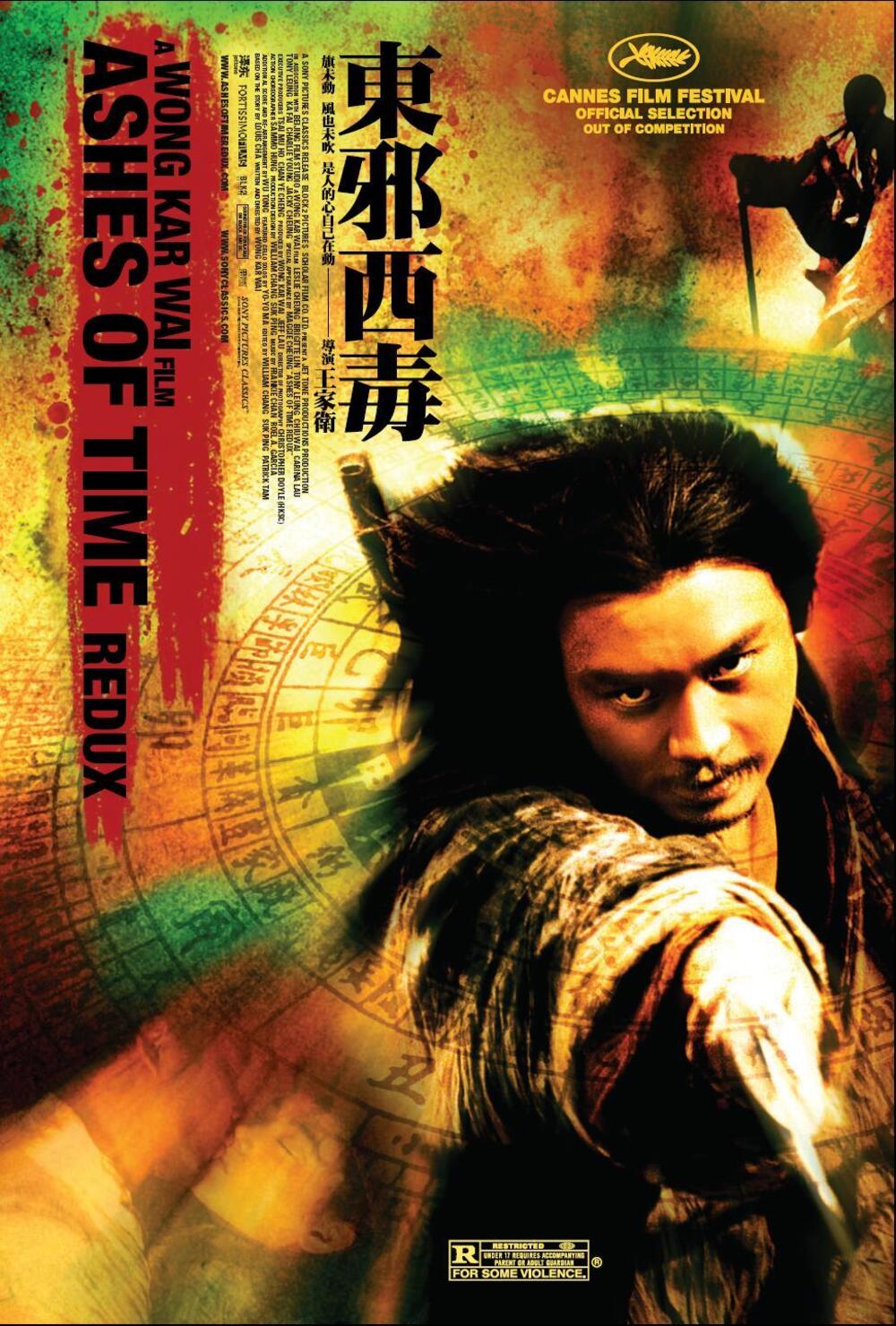-
Exploring Wong Kar-wai's Filmography - Third Part: Ashes of Time
Dung che sai duk / Ashes of Time (1994) - Solitary Soul(s) on a Quest for Redemption - 7/10 (15/01/16)

Ashes of Time, originally known as Dung che sai duk, is a unique arthouse film which is loosely bound upon Jin Yong's wuxia novel The Legend of the Condor Heroes. Despite two blurry action sequences, this movie however can't be considered a martial arts movie. Due to its philosophical content, its numerous metaphors, its examples of symbolism and its calm episodic script, this movie could best be categorized as a drama. The movie is separated into five sections according to the four seasons with the spring season representing both introduction and coda of this piece of art. Director Wong Kar-wai doesn't offer any conclusion to the film's vague story and instead challenges the audience to make sense of this film on its own.
The only guiding lines of the movie are the changes of season, the transformation of colourful landscapes and the topic of unrequited love and how to deal with that depressing fate. Each character has faced, currently faces or will face a desperate romantic relationship and everyone of them tries to find a different solution: one of them simply tries to forget the past, another one seeks refuge in isolation and another one wants to assassinate the one who causes all the emotional and mental suffering. In the end, none of the characters can find a satisfying answer on their quest for redemption. Despite the depressing tone, the beginning of the movie can be interpreted as the origin of a quest for redemption while the coda might be seen as an optimistic attempt at renaissance.
This film can be interpreted in at least two ways. One possibility is that the main location in form of a bare cabin in the desert is a meeting point for solitary souls who feel outcast from society and who are absorbed by their mental problems. The main character listens to their different stories and often manages to find solutions for them but he is still unable to solve his own problems. Another possibility is that this movie is only about the main character and that the side characters only exist on his confused mind and represent different sides of his shattered soul looking for salvation.
Despite its colourful journey, inspiring philosophical content and revolutionary visual component, this courageous piece of art is not appropriate for mainstream audiences and might even be hard to digest for passionate cineasts. The movie's pace is extremely slow and it contains several noticeable lengths towards the middle. While the few fight choreographies could have spiced things up a little bit, they happen to be rather redundant, slow and unspectacular.
In the end, you should absolutely watch this movie if you have an open mind for philosophical arthouse experiments that request your intellectual participation. You should avoid it if you are expecting a vivid wuxia movie or a tense martial arts film because your expectations won't be met and you will end up being disappointed.
« Exploring Wong Kar-wai's Filmography - Second Part: Days of Being WildCreating Atmospheric, Smooth and Warm Soundscapes - A Review of Black Sabbath's Tyr »









